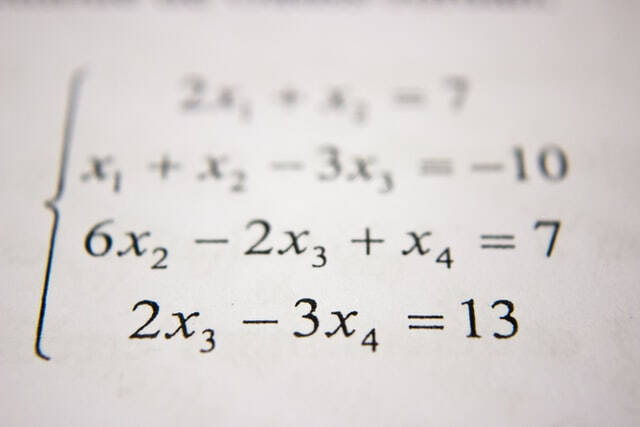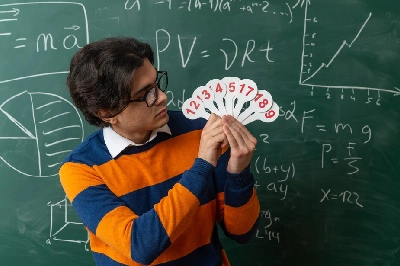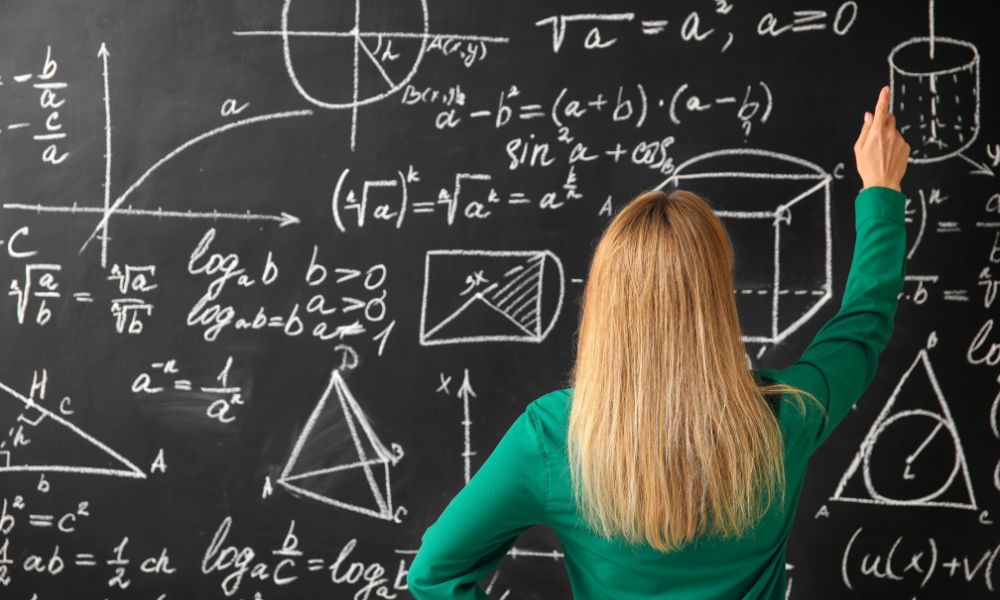Boost your confidence in complex numbers With expert algebra 2 help
Wiki Article
The Comprehensive Protection of Algebra 2 Tutoring: Trick Ideas and Skills for Mastery
Algebra 2 tutoring offers a broad spectrum of necessary ideas and skills necessary for students to accomplish mastery in maths. This encompasses a comprehensive understanding of polynomial features, complicated numbers, and logarithmic formulas, amongst others. Each subject improves the previous one, developing a natural framework for problem-solving. The application of these concepts in real-world situations highlights their significance. Yet, there continue to be vital areas that can further enhance a student's mathematical trip.Understanding Polynomial Features
How do polynomial features form the landscape of algebra? These basic expressions, consisting of variables raised to non-negative integer powers, work as the foundation of several algebraic ideas. They can be identified by their degree, which suggests the highest power of the variable, and their coefficients, which figure out the function's behavior. Polynomial functions show unique residential or commercial properties, such as continuity and level of smoothness, allowing them to model a selection of real-world circumstances. Their graphical depictions feature curves that can show various actions, including intercepts and turning points. Comprehending polynomial features entails mastering procedures such as addition, subtraction, department, and multiplication, in addition to factoring strategies. This fundamental understanding is essential for addressing equations and inequalities. By grasping polynomial functions, pupils establish crucial analytic skills and acquire understanding into a lot more complex mathematical concepts, leading the way for advanced research studies in algebra and past.Grasping Complicated Numbers

Interpretation and Quality
Complex numbers, a foundation of advanced algebra, expand the idea of one-dimensional number lines to a two-dimensional aircraft. Defined as numbers of the form (a + bi ), where (a) and (b) are real numbers and (i) represents the fictional unit with the building (i ^ 2 = -1 ), these numbers have one-of-a-kind residential properties. The real part (a) suggests the straight axis, while the fictional part (b) shows the upright axis in the facility airplane. Key homes include their ability to represent options to polynomial equations that lack real options and their closure under enhancement, reproduction, division, and reduction (other than by absolutely no) This structure allows for a deeper understanding of mathematical ideas and applications throughout numerous areas.Workflow With Complicated Numbers
Workflow with complex numbers create an important aspect of algebra that boosts mathematical understanding and analytical capabilities. Intricate numbers, shared in the form (a + bi), where (a) and (b) are actual numbers, require details procedures like addition, multiplication, department, and subtraction.Enhancement and subtraction involve integrating like terms, while reproduction makes use of the distributive home and the fact that (i ^ 2 = -1) Division of intricate numbers requires multiplying the numerator and denominator by the conjugate to get rid of the fictional part in the common denominator. algebra 2 help.
These procedures not just reinforce fundamental algebra abilities yet additionally prepare trainees for advanced subjects, such as polynomial formulas and square features. Mastery of complex number procedures furnishes students with critical logical devices.
Exploring Logarithmic Formulas
In the research study of logarithmic formulas, recognizing the buildings of logarithms is important for effective problem-solving. These buildings give the foundational tools needed to adjust and simplify logarithmic expressions. By understanding these principles, pupils can with confidence take on a range of logarithmic formulas.Understanding Logarithm Characteristics
Logarithm properties play an important function in simplifying and resolving logarithmic formulas, using a systematic technique to comprehending their behavior. These homes consist of the item, power, and ratio regulations. The product guideline states that the logarithm of an item is the sum of the logarithms of its factors. On the other hand, the ratio guideline shows that the logarithm of a quotient is the difference of the logarithms. The power guideline reveals that the logarithm of a number elevated to a backer can be expressed as the backer multiplied by the logarithm of the base. Proficiency of these properties improves one's capacity to adjust logarithmic expressions, giving a foundation for dealing with extra intricate formulas and functions come across in advanced algebra.Fixing Logarithmic Formulas
How can one efficiently fix logarithmic equations? To deal with these formulas, it is essential to utilize buildings of logarithms. One must combine logarithmic expressions utilizing the ratio, item, and power regulations. This simplification frequently transforms the equation right into a more manageable form. Next, transforming logarithmic equations to their exponential kind can disclose the unidentified variable. As an example, the equation (log_b(x) = y) converts to (x = b ^ y ) In addition, inspecting services is vital to guarantee they do not produce additional results, specifically when managing logarithms. By methodically using these strategies, individuals can confidently browse and fix logarithmic equations, boosting their overall understanding and mastery of this mathematical principle.Evaluating Sequences and Series
Although series and collection might at first appear complex, they are basic principles in algebra that expose patterns and relationships within numbers. A sequence is a checklist of numbers organized in a particular order, usually defined by a formula or rule. Recognizing the sorts of series, such as arithmetic and geometric series, allows trainees to recognize the underlying patterns properly.On the other hand, a collection is the sum of the regards to a sequence. Assessing series entails recognizing finite and boundless series, in addition to computing their amounts when suitable. Pupils discover crucial techniques, such as utilizing formulas for the amount of arithmetic and geometric series, which improve estimations.
Mastering sequences and collection outfits students with necessary problem-solving skills, enabling them to deal with extra complex mathematical ideas. This structure is vital for their proceeded success in algebra and higher-level mathematics.
Resolving Sensible Expressions and Formulas

When addressing logical equations, one need to separate the variable, frequently by cross-multiplying to get rid of the portions. It is necessary to examine for additional options, as their explanation increasing both sides can introduce values that do not satisfy the original formula. Additionally, students have to recognize constraints on the variable, as specific worths can make the no, making the expression undefined.
Grasping Conic Sections
Conic areas are geometric numbers originated from the crossway of an aircraft and a dual cone. These areas consist of circles, ellipses, parabolas, and hyperbolas, each identified by distinct homes and equations. Understanding conic areas is crucial for pupils as they discover the relationships in between algebra and geometry.
Circles are specified by a continuous distance from a center point, while ellipses arise from an airplane cutting through both cones, creating a shut curve. Parabolas develop from a plane alongside the axis of the cone, showing a U-shaped graph. Hyperbolas, on the other hand, take place when the airplane halves both converges of the cone, causing 2 unique, open curves.
In Algebra 2, understanding conic sections entails acknowledging their common equations, graphing them accurately, and determining their key functions, such as foci, axes, and vertices. This foundational knowledge prepares pupils for advanced mathematical ideas.
Using Graphs and features
Functions and charts serve as basic tools in Algebra 2, making it possible for trainees to design relationships between variables and visualize mathematical ideas. Proficiency of these aspects permits students to interpret information, identify patterns, and make forecasts based upon well-known patterns. Students discover numerous types of functions, consisting of direct, square, polynomial, sensible, and exponential, each with distinct features and applications.Graphing these functions includes recognizing crucial attributes such as inclines, intercepts, and asymptotes, which supply understandings right into their actions. Additionally, trainees discover to change functions via stretches, changes, and representations, boosting their capacity to manipulate and evaluate graphical representations.
Applying features in real-world contexts better solidifies comprehension, as students tackle problems including earnings margins, populace development, and physics formulas. This sensible application bridges academic expertise with tangible results, promoting a deeper gratitude for the significance of functions and graphs in daily life.
Often Asked Concerns
Exactly How Can I Enhance My Problem-Solving Skills in Algebra 2?
To improve problem-solving abilities in Algebra 2, one ought to practice routinely, look for diverse problems, utilize on the internet resources, work together with peers, and concentrate on understanding underlying concepts instead of memorizing procedures, cultivating much deeper understanding and application.view website
What Resources Are Recommended for Additional Algebra 2 Technique?
Suggested resources for additional Algebra 2 method include online platforms like Khan Academy, books with method problems, and tutoring solutions. Taking part in math forums can additionally supply diverse analytic strategies and collaborative learning possibilities.Exist Online Tutoring Options Available for Algebra 2?
Yes, various on-line tutoring choices exist for Algebra 2 (advanced algebra). Platforms like Khan Academy, Chegg Tutors, and Wyzant offer individualized support, video clip lessons, and interactive exercises, providing to numerous discovering designs and schedules for pupils seeking assistanceHow Do I Plan for Algebra 2 Examinations Effectively?
To prepare successfully for Algebra 2 exams, one need to review vital concepts, technique problems consistently, use on-line resources, develop study hall, and take method tests to recognize staminas and weaknesses for targeted renovation.
What Prevail Mistaken Beliefs Students Have in Algebra 2?
Pupils commonly misinterpret the importance of fundamental ideas, believing they can skip prerequisites. They might likewise deal with abstract reasoning, perplexing functions with equations, and misunderstanding the function of variables in algebraic expressions.Mastering complicated numbers is necessary for students in Algebra 2, as these numbers expand the real number system to resolve equations that do not have genuine remedies. These operations not just reinforce fundamental algebra abilities however also prepare trainees for even more advanced topics, such as polynomial formulas and quadratic features. Sensible expressions and equations represent crucial components of algebra, including portions where the numerator and denominator are polynomials. In Algebra 2, grasping conic areas entails recognizing their linked here typical equations, graphing them precisely, and recognizing their key features, such as emphases, axes, and vertices. Using features in real-world contexts further solidifies comprehension, as students tackle issues including revenue margins, population development, and physics formulas.
Report this wiki page